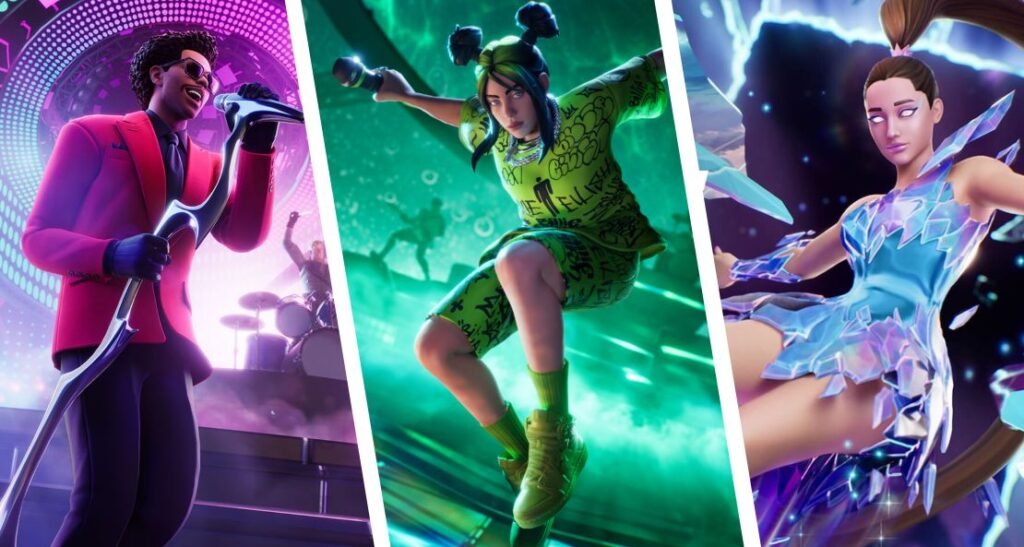Fortnite didn’t just dabble in music; it built a platform that pulls pop culture into a game and pushes new songs back out into the world.
The flywheel is simple: headline moments lure music fans into Fortnite, and those same spectacles turn gamers into listeners. The proof started on 2 February 2019, when Marshmello staged a 10-minute set at Pleasant Park.
Epic put attendance at 10.7 million, a wild number for a first-of-its-kind show and, at the time, Fortnite’s biggest moment.
One year later the bar moved again. Travis Scott’s Astronomical (23–25 April 2020) drew a record 12.3 million concurrents on opening night and 27.7 million unique attendees across five showings, underlining that Fortnite could premiere music at stadium scale inside a game.
Epic then layered in lighter, social formats. Party Royale launched in May 2020 with back-to-back sets from Dillon Francis, Steve Aoki, and deadmau5; in September, BTS premiered the choreography version of “Dynamite” on the Party Royale Main Stage; at Halloween, J Balvin headlined Fortnitemares and debuted “La Luz” with Sech.
These weren’t just shows, they were frictionless premieres with built-in cosmetics and re-airings that matched global time zones.
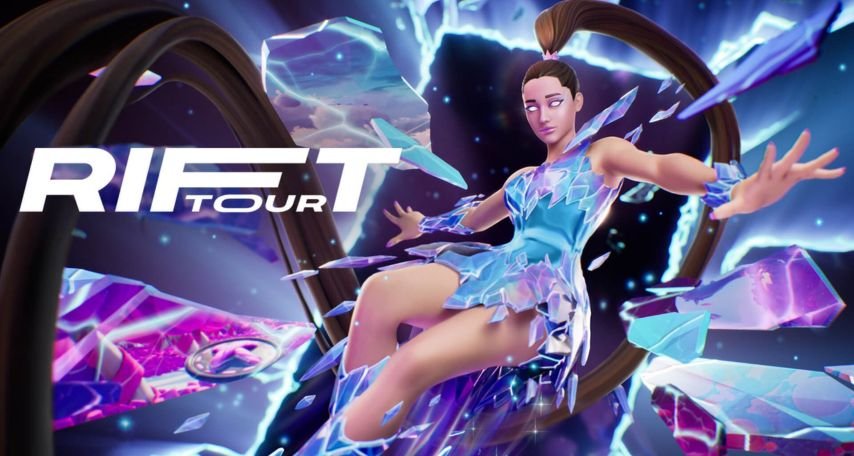
By 2021 the model widened again. Ariana Grande’s Rift Tour ran five times from 6–8 August with minigames and an Icon drop, the clearest sign that Fortnite could run music like a tour rather than a one-night tent-pole.
In parallel, the Soundwave Series arrived, a rolling showcase that gave artists their own creator-built islands: Mohamed Hamaki, Tones And I, Emicida, Gen Hoshino, and Aya Nakamura all hosted interactive sets players could drop into any time over multi-day windows.

Everything crystallised in December 2023 when Fortnite Festival launched with The Weeknd as the first seasonal Icon; a Harmonix-powered rhythm mode with a pass, Jam Tracks and a Main Stage that refreshes with new headliners.
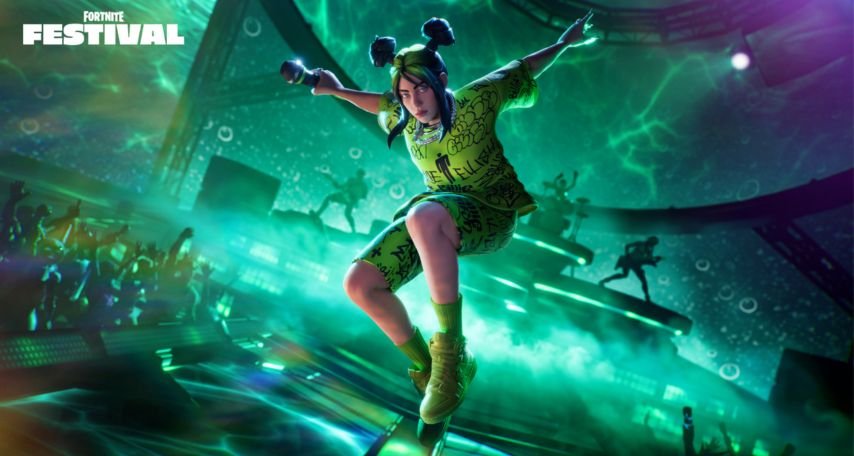
Lady Gaga led Season 2 in February 2024, Billie Eilish took Season 3 in April, and Metallica levelled it up in June with both a Festival season and a separate multi-show “Fuel. Fire. Fury.” event.
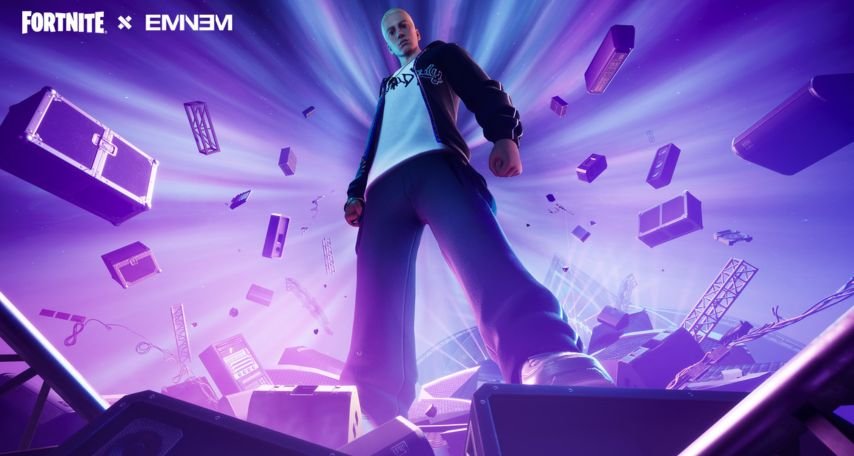
The tent-poles kept tying back to Fortnite’s core story. On 2 December 2023, The Big Bang chapter reset featured an in-event appearance by Eminem, teeing up the new front page of Fortnite built around LEGO Fortnite, Rocket Racing and Festival.
Fortnite’s 2024 “Chapter 2 Remix” arc featured a full, posthumous collaboration with Juice WRLD, built as a living memorial rather than a one-night show.
Players discovered WRLD’s Point on the island, unlocked a free Slayer outfit during a limited login window (with a second skin later sold in the shop), and saw Juice woven into the season’s marquee beats alongside Snoop Dogg, Eminem and Ice Spice.
The estate also partnered on a Fortnite-created video for “Empty Out Your Pockets,” while Festival has kept the connection current with Juice WRLD Jam Tracks like “Barbarian.”
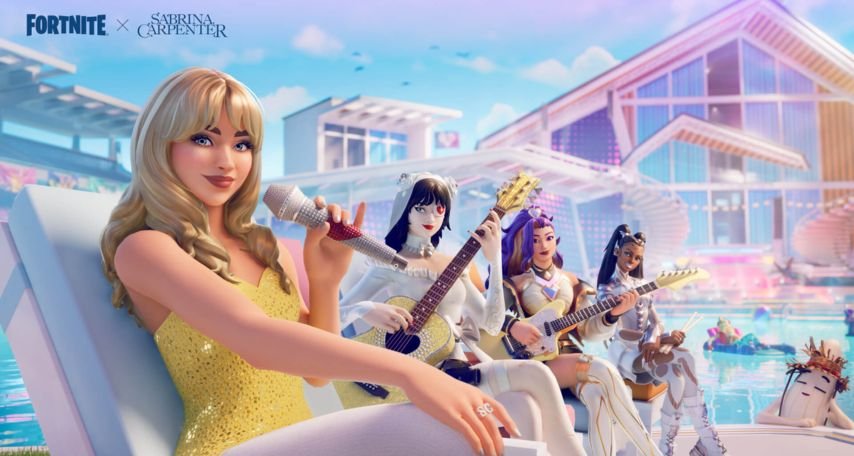
In 2025 the seasonal cadence became pop-culture shorthand. Sabrina Carpenter fronted Season 8 in April, Bruno Mars followed for Season 9 in June, and Gorillaz crossed the virtual-band line for Season 10 in late August, each with outfits, Jam Tracks and quests that kept music on the island between big moments.
That leads neatly to the latest pivot: Daft Punk’s in-game Experience. Rather than a single set, Epic has built a multi-room music playground discoverable in-client, with remix spaces, a Robot Rock arena, a LEGO-style “Around the World” video maker, and a dedicated Alive-era stage — plus a bundle featuring the duo’s helmets and a “Get Lucky” Jam Track.
It’s a small museum crossed with a toybox, and it shows how catalogue acts can live inside Fortnite as playable culture, not just as one-off shows.
Step back and the intent is obvious. Fortnite started with appointment viewing, added social premieres, localised via Soundwave, then industrialised the whole thing through Festival’s seasons.
Artists get reach, narrative control, merchandising and chart-adjacent moments; players get music that never really leaves the island.
And the reach is measurable: consumer research consistently shows that gaming is a material discovery channel for young audiences, with roughly a quarter of gamers in one YouGov study saying they discover new music through games, and a Deloitte pulse survey finding a third of Gen Z gamers hear a song in a game and look it up to stream or buy.
Fortnite turned music into an always-on feature, not a sideshow. From Marshmello’s 10.7 million to Travis Scott’s record-breaking residency, from Ariana’s tour logic to Metallica’s summer takeover and Daft Punk’s interactive world, the game now acts like a label, a venue and a rhythm game all at once, and that’s why artists and fans keep showing up.
You might also like:
- The Gorillaz Paradox: How a Fake Band Became Real
- Get Ready With Me: How GRWM Became Music’s New Mood Board
- Sabrina Carpenter — Man’s Best Friend (album review & lyrics meaning)
- Billie Eilish’s “Wildflower” Lyrics Explained
- The Weeknd — “Baptized In Fear” (lyrics unpacked)
- Ariana Grande’s “Twilight Zone” Lyrics Meaning
